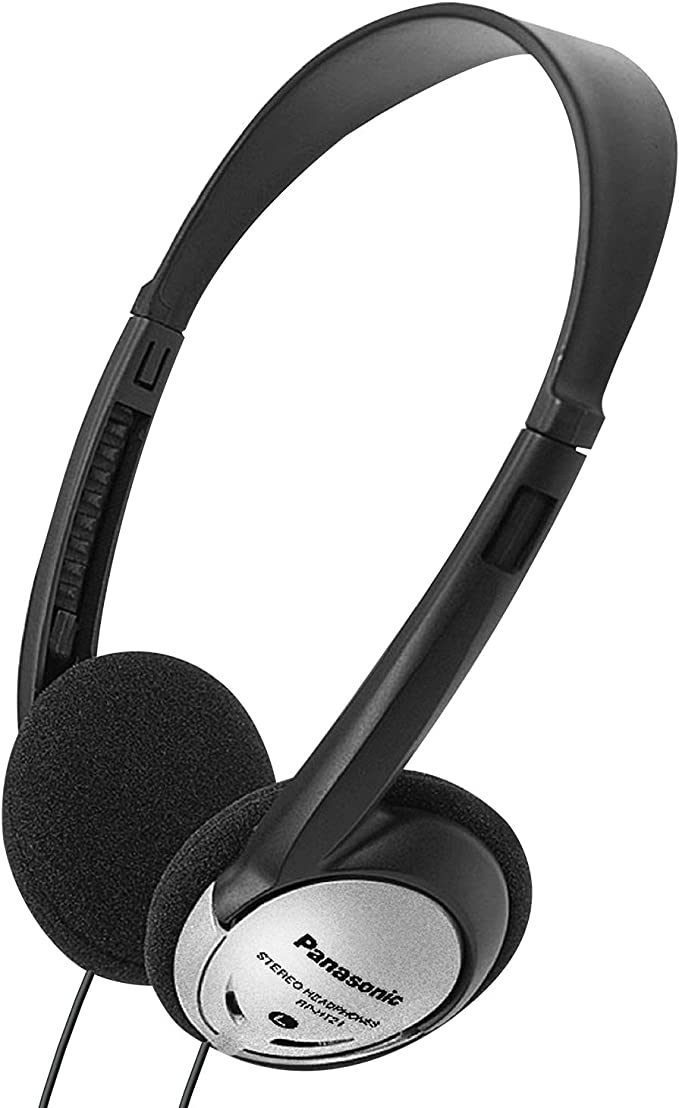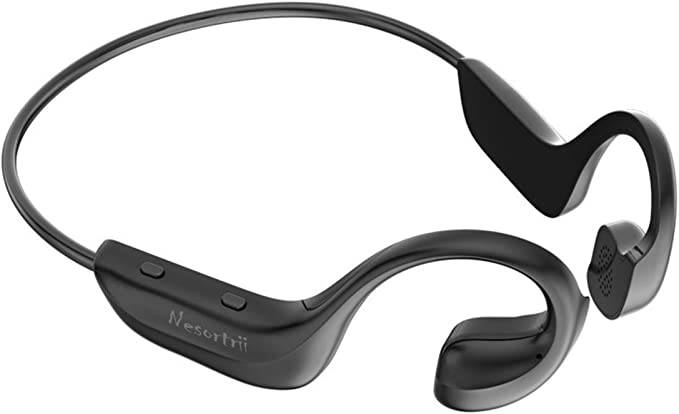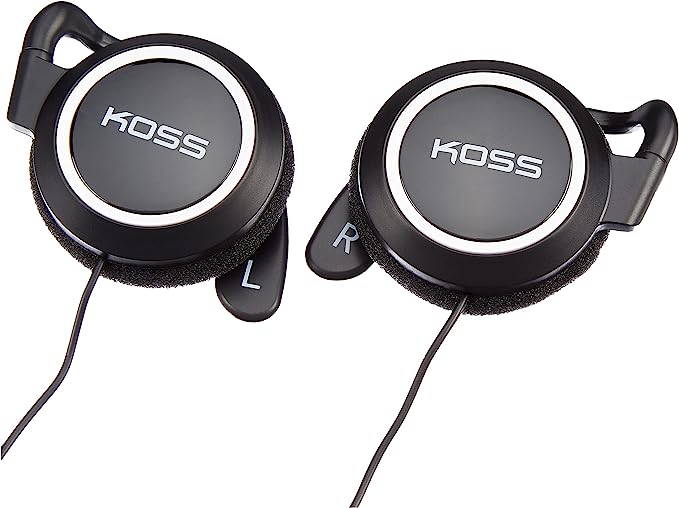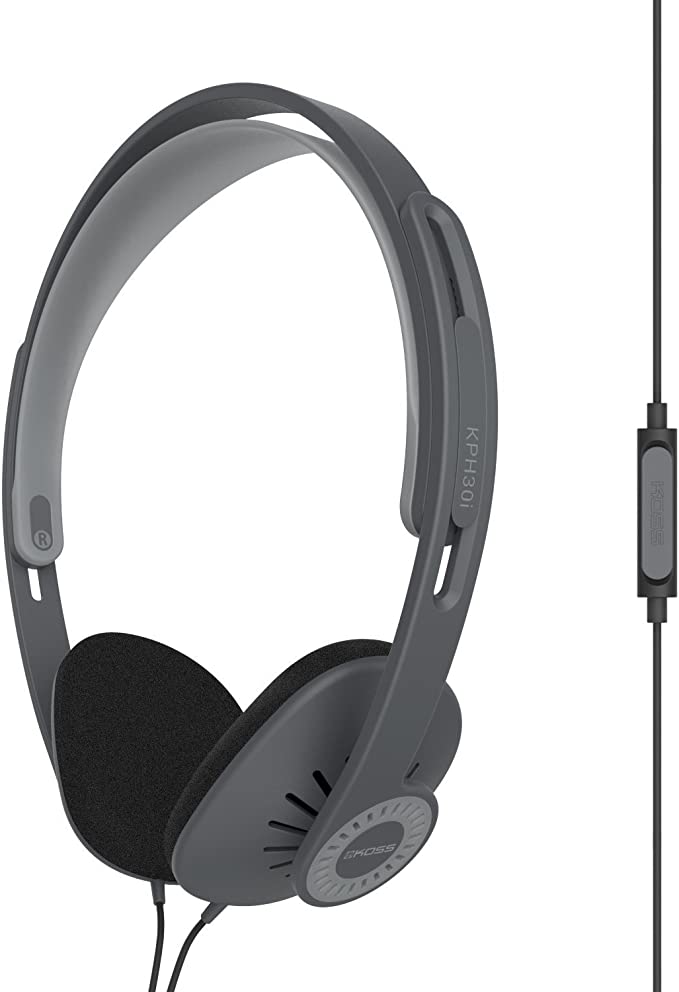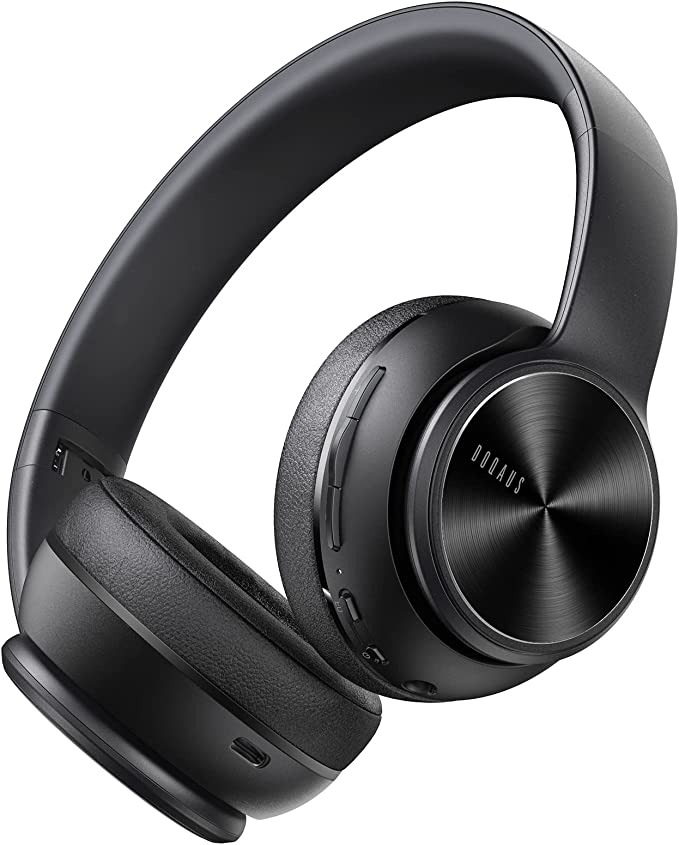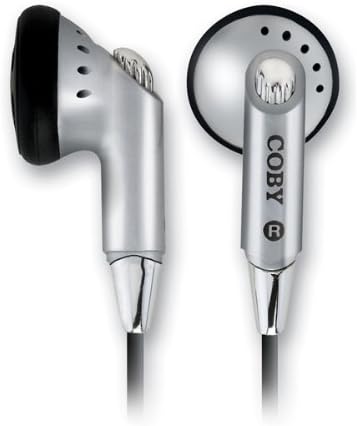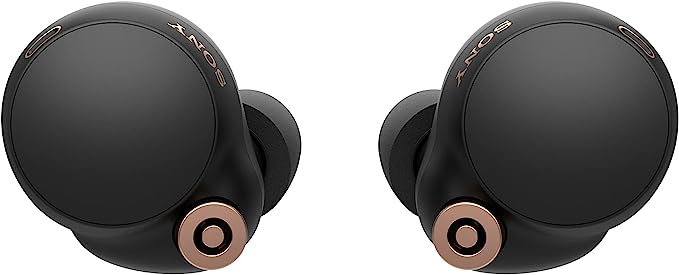Mevoix EP032 Headphones: Unveiling the Science in Budget-Friendly On-Ear Audio
Update on May 29, 2025, 8:02 a.m.
Overture: The Unheard Symphony in Our Daily Gadgets
In our hyper-connected lives, headphones are more than just accessories; they are our personal portals to myriad soundscapes – from the focused hush of a study session soundtracked by ambient tunes, to the vibrant energy of a morning commute enlivened by a favorite podcast, or the critical clarity needed for an online class. We slip them on, press play, and often take for granted the intricate dance of physics and engineering दैट enables this daily ritual. But what if even the most unassuming, budget-friendly pair of headphones, like the Mevoix EP032, holds a trove of fascinating scientific stories waiting to be unveiled?
Let’s embark on a journey, not a typical product review, but an exploration. Using the Mevoix EP032 On-Ear Headphones as our “specimen,” we’ll delve into the science and design principles that transform simple electricity into the rich tapestry of sound that colors our world. While this specific model is currently marked as “unavailable” for purchase, the technologies it embodies are common across many accessible audio devices, making this exploration relevant for any curious consumer. Prepare to discover the everyday alchemy at play, often hidden in plain sight.

The Heartbeat – Decoding the Drive for Sound
At the core of any headphone, the component responsible for the “magic” of converting electrical signals into audible sound waves, is the driver. The Mevoix EP032, according to its specifications, houses 40mm neodymium dynamic driver units. This isn’t just a string of technical jargon; it’s a concise description of a miniature, yet powerful, sound-producing engine nestled within each earcup.
Imagine a dynamic driver as a tiny, sophisticated loudspeaker. It operates on a fundamental principle of electromagnetism: when an electrical audio signal (representing the music or voice) flows through a finely coiled wire (the voice coil) that is attached to a thin, flexible membrane (the diaphragm), and this assembly is placed within a magnetic field, a force is generated. This force causes the diaphragm to vibrate rapidly – pushing and pulling the air in front of it. These vibrations create pressure waves, which our ears perceive as sound.
Now, let’s break down those key terms:
- “Dynamic” refers to this principle of a moving coil within a magnetic field, a robust and widely used technology known for its ability to produce a full range of sound, especially at an affordable price point.
- “Neodymium” is where things get particularly interesting for a budget-friendly model. Neodymium is a rare-earth element used to create incredibly strong, yet lightweight, permanent magnets. Compared to older ferrite magnets of the same size, neodymium magnets can produce a significantly more powerful magnetic field. Think of it as a small engine автомобиля that punches well above its weight. This stronger magnetic flux allows for more precise control over the diaphragm’s movement. For you, the listener, this can translate into several benefits:
- Efficiency: The driver can produce more sound with less power, making it suitable for use with portable devices like smartphones or laptops that may not have high-output amplifiers.
- Clarity and Transient Response: The diaphragm can react more quickly and accurately to changes in the audio signal. This “transient response” is crucial for rendering the sharp attack of a drum beat or the subtle decay of a cymbal, contributing to what Mevoix describes as a “punchy, rhythmic response.”
- Potentially Better Bass: A well-controlled diaphragm can move more air more precisely, which is essential for reproducing lower frequencies with impact and without excessive distortion.
- “40mm” refers to the diameter of the diaphragm. Generally, a larger diaphragm has the potential to move more air, which can be beneficial for producing a fuller sound, especially in the bass and lower-midrange frequencies. It’s like having a larger drum head – it can resonate more deeply. However, size isn’t everything; the quality of the diaphragm material, the magnet, and the overall acoustic design of the earcup are equally vital.
So, when Mevoix states these drivers “enable the wired headphones to deliver a punchy, rhythmic response to even the most demanding track,” the 40mm neodymium setup provides a credible scientific basis for such a claim within its product class. It’s an attempt to offer a more engaging and dynamic listening experience than one might expect from its price bracket.

Your Personal Sound Bubble – The Quiet Craft of Isolation
Beyond the raw production of sound, how we perceive that sound is critically influenced by our acoustic environment. The Mevoix EP032 headphones are described as offering “Stereo Bass Noise Isolating” capabilities. While “Stereo Bass” refers to the ability to reproduce distinct left and right audio channels creating a sense of space and depth, coupled with an emphasis on low-frequency reproduction, the “Noise Isolating” aspect is achieved through passive noise isolation.
This is a crucial distinction from active noise cancellation (ANC), a more complex technology that uses microphones to detect ambient noise and electronics to generate an “anti-noise” wave to cancel it out. Passive noise isolation, in contrast, is fundamentally about physics – creating a physical barrier to block external sound waves from reaching your ears.
Here’s how the EP032 likely achieves this:
- On-Ear Design: The earcups are designed to sit directly on your outer ears (pinnae). This design, when executed well, can create a reasonable seal.
- Earcup Materials and Seal: The product information highlights “ultra-plush faux leather and cloud foam cushions” and “Super soft earpads surround the ears to block ambient noise.” This is key.
- The faux leather (a synthetic material mimicking leather) acts as a non-porous barrier to sound waves.
- The “cloud foam” (likely a type of memory foam or a similar soft, conforming foam) plays a dual role: it enhances comfort by distributing pressure evenly, and, more importantly for isolation, it deforms to create a snug seal around the contours of your ears. The better the seal, the more effective the isolation. Think of it like closing a window in a noisy room – the tighter the window seals, the quieter it becomes inside.
- Acoustic Damping: The earcup housing itself can also contribute by being made of materials that don’t easily resonate or transmit sound.
This “isolation construction” is most effective at blocking mid-to-high frequency sounds – a babble of voices in a café, the click-clack of keyboards in an office, or the hiss of traffic. Lower frequency sounds, like the rumble of a bus engine, have longer wavelengths and more energy, making them harder to block passively.
For the user, the benefit is a more immersive listening experience. By reducing the intrusion of external noise, you can often listen at lower, safer volume levels and still hear the details in your audio. Whether you’re trying to focus on an online lecture in a busy household or lose yourself in an audiobook on your commute, this passive bubble of quiet can be a welcome feature. It’s a testament to how clever physical design can yield significant experiential benefits without costly electronics.

The Art of the Embrace – Comfort Engineered for Hours, Not Just Minutes
If a pair of headphones sounds great but feels like a medieval torture device after twenty minutes, its technical prowess is largely moot. Comfort is paramount, especially for headphones intended for “school, travel, computer, tablet, laptop” – scenarios that often involve extended wear. The Mevoix EP032’s design incorporates several elements aimed at achieving this ergonomic grace.
The first and most obvious factor is weight. At a mere 6.2 ounces (approximately 176 grams – roughly the weight of an average smartphone or a billiard ball), these are categorized as lightweight. The physics is simple: less mass exerts less downward force on the crown of your head and less pressure on your ears, reducing fatigue over time. This is particularly important for younger users or anyone sensitive to pressure.
Complementing the low weight are the materials and structural design:
- “Ultra-plush faux leather and cloud foam cushions” are repeatedly mentioned, and for good reason. As discussed in the context of noise isolation, these materials also serve a primary comfort function. Faux leather can offer a soft touch, while “cloud foam” (if it behaves like memory foam) conforms to the unique shape of your ears, distributing clamping force more evenly and minimizing pressure points. Imagine the difference between sitting on a hard wooden bench versus a cushioned armchair – the principle of pressure distribution is similar.
- Padding across the top (headband): The part of the headphone that rests on your head is also padded. This prevents a narrow pressure point on the sensitive crown of the head, which can quickly lead to discomfort.
- Adjustable Sizing: The ability to adjust the length of the headband is a fundamental ergonomic feature. It allows users with different head sizes and ear positions to achieve a secure yet comfortable fit, ensuring the earcups align correctly with the ears.
The on-ear form factor itself is a design choice with comfort implications. Compared to over-ear headphones (which fully encircle the ear), on-ear models are generally smaller and lighter. However, because they press directly onto the ear cartilage, the quality of the padding and the clamping force of the headband are critical to avoid discomfort. Mevoix seems to have aimed for a balance here, leveraging soft materials to mitigate the direct pressure.
Finally, the foldable design contributes indirectly to comfort by making the headphones more convenient to carry when not in use. Less bulk means they are less of a hassle during travel or a commute, reducing the overall “burden” of ownership. While not directly related to wearing comfort, this practical design touch enhances the user experience.

The Unsung Hero – A Cable Built for the Real World
In the world of portable audio, the humble cable is often an unsung hero or, too frequently, a frustrating villain. It’s twisted, tangled, snagged, and often the first point of failure. The Mevoix EP032 product description highlights a “Premium nylon fabric” cable, and one user review favorably notes, “The cord is great! It’s not the plastic kind but more like thin rope and doesn’t get all bent up.” This choice of material and construction is a small but significant detail that speaks to an understanding of real-world usage.
Why is a nylon braided cable superior to a standard plastic-coated one, especially in a budget-friendly product?
- Durability and Strength: Nylon is a synthetic polymer known for its excellent tensile strength, toughness, and abrasion resistance. A braided construction, where multiple strands of nylon are interwoven to form the cable jacket, further enhances these properties. It makes the cable more resistant to the everyday stresses of being pulled, bent, and coiled repeatedly. Think of the difference between a single thread and a woven rope – the rope is far stronger.
- Tangle Resistance: The texture and slight rigidity of a braided nylon cable, compared to a smooth, often stickier plastic one, inherently make it less prone to an-nerving tangles. This is a huge practical benefit for anyone who’s ever spent frustrating minutes untangling a “bird’s nest” of headphone wires pulled from a bag.
- Flexibility and Feel: Braided cables often have a more pleasant tactile feel and can be more flexible without kinking permanently, contributing to a more premium user experience even in an affordable product. The brand itself states the “Braided cable and headband supports 1w bends,” suggesting a focus on this aspect of durability during design.
While a cable might seem like a mundane component, investing in a more robust one like braided nylon is a smart design choice. It directly addresses a common user pain point and can significantly extend the usable lifespan of the headphones, making it a feature that adds tangible, long-term value.

The Timeless Connection – Plug, Play, and Predictability
In an era increasingly dominated by wireless Bluetooth technology, the Mevoix EP032 steadfastly employs a 3.5mm wired connection. This might seem old-fashioned to some, but the venerable 3.5mm plug (also known as a phone jack or audio jack) offers a compelling suite of advantages, particularly for a product focused on reliability and broad compatibility.
The science of this connection is beautifully simple: it transmits analog audio signals directly from the source device to the headphone drivers.
- TRS/TRRS Connectors: The plug itself typically has segments: Tip (T), Ring (R), and Sleeve (S). A standard stereo plug is TRS, carrying the left audio channel, right audio channel, and a common ground. If the headphones include a microphone, like the EP032 does, it will use a TRRS connector, adding an extra Ring to carry the microphone signal.
The benefits of this wired approach are numerous:
- Universal Compatibility: The 3.5mm jack has been an audio standard for decades. As Mevoix states, “The 3.5 mm plug allows you to listen to any device.” This includes a vast ecosystem of smartphones (though some newer models have omitted it), tablets, laptops, desktop computers, MP3 players, gaming consoles, and even airline entertainment systems. This “plug and play” simplicity is hard to beat.
- No Battery Anxiety: Wired headphones draw their minimal power directly from the audio source. There are no batteries to charge, no worries about your headphones dying mid-song or mid-call.
- Signal Stability and Potentially Higher Fidelity: A direct wired connection is not susceptible to the interference, dropouts, or compression artifacts that can sometimes plague wireless connections, especially in crowded radio frequency environments. For purists, an analog signal path also avoids the digital-to-analog conversion that happens within Bluetooth headphones, though at this price point, the internal DACs of source devices are the more relevant factor.
- Zero Latency: The signal transmission is practically instantaneous. This is crucial for activities like gaming or watching videos, where any delay between the visuals and the audio (latency) can be jarring.
While wireless offers freedom of movement, the wired connection of the EP032 champions unwavering reliability, universal access, and a straightforward, uncompromised audio signal path, making it a pragmatic and often preferred choice for many everyday listening scenarios.
Speaking and Controlling – The Modest Might of the In-Line Companion
Modern headphones are rarely just for listening; they are also communication tools. The Mevoix EP032 features an in-line control with a built-in microphone, a feature that significantly enhances its utility for “school, travel, computer, tablet, laptop.”
The microphone itself, described as picking up voice “easily without my having to touch it, it just dangles there,” is likely a small electret condenser microphone (ECM). ECMs are common in such applications due to their compact size, good sensitivity for voice frequencies, and relatively low cost. They work by using a permanently charged material (the electret) next to a diaphragm. Sound waves cause the diaphragm to vibrate, changing the capacitance between it and the backplate, which is then converted into an electrical signal. While an in-line microphone on a budget headphone won’t rival a dedicated studio microphone, it’s generally more than adequate for clear voice calls, online meetings, or voice commands in reasonably quiet environments.
The in-line control unit typically houses this microphone and one or more buttons. The EP032 offers basic but essential functions: “Pause, play, answer and hang up calls conveniently with a simple press of a button.” This is achieved through simple electrical switches within the control housing that send signals back to the source device via the TRRS jack (which, as mentioned, has a dedicated conductor for such signals).
The value for the user is clear:
- Hands-Free Communication: No need to hold your phone to your ear during a call, freeing up your hands for other tasks.
- Convenient Media Control: Quickly pause music to hear an announcement or talk to someone, then resume without fumbling for your device.
- Improved Productivity: Seamlessly switch between listening to content and taking calls, crucial for online learning or remote work.
While the sophistication of in-line controls can vary (some offer volume adjustment or track skipping), the core functionality provided by the Mevoix EP032 covers the most frequent and essential interactions, adding a layer of practical convenience to the listening experience. For a product aimed at broad usability across various devices and activities, this modest in-line companion is a genuinely useful feature.

Coda: The Sum of Small Wonders – Appreciating Value in Affordable Audio
As we’ve journeyed through the inner workings of the Mevoix EP032 headphones—from their neodymium-powered heart to their comfortably isolating embrace and reliably wired lifeline—a clear picture emerges. This isn’t about groundbreaking, cutting-edge innovation in the way a flagship product might be. Instead, it’s about the intelligent application of established science and thoughtful design to create a product that aims to deliver genuine utility and a pleasant experience within a very accessible price bracket (reportedly around $19.99 when available, though currently listed as unavailable).
The 40mm neodymium drivers offer a glimpse into how strong magnetic fields and well-proportioned diaphragms can strive for clear, dynamic sound. The passive noise isolation, achieved through simple physics and material choices, demonstrates how a quieter listening environment can be crafted without complex electronics. The attention to comfort via lightweight construction and plush materials underscores the understanding that headphones are worn, often for extended periods. The durable nylon-braided cable and the universally compatible 3.5mm jack speak to a pragmatism centered on longevity and ease of use. Even the simple in-line microphone and controls add a layer of everyday convenience that many users will appreciate.
What the Mevoix EP032 represents is the art of balance that engineers and designers must master in the realm of budget-friendly electronics. It’s a constant process of prioritizing features, selecting appropriate materials, and leveraging proven technologies to meet core user needs without letting costs spiral. User feedback, like the 4.4-star average from over 500 ratings (from the provided information), suggests that for many, Mevoix struck a commendable balance with this model, delivering on perceived value even if, as is common with any product, experiences can vary.
Though you may not be able to purchase the Mevoix EP032 today, the principles it embodies remain pertinent. The next time you pick up any pair of headphones, regardless of their price, take a moment. Consider the unseen alchemy at play: the vibrating diaphragms painting soundscapes in your ears, the materials carefully chosen to cushion and isolate, the simple wires faithfully carrying a universe of audio. There’s a quiet ingenuity in these everyday gadgets, a testament to our enduring quest to harness science for connection, knowledge, and a little bit of joy. Understanding this can make us all more informed consumers and, perhaps, a little more appreciative of the small wonders that surround us.

